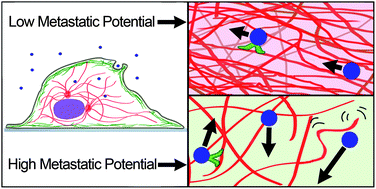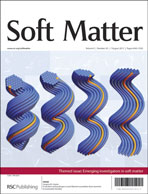Origin of active transport in breast-cancer cells†
Abstract
Living cells are active systems, continuously adapting to respond to their environment. The dynamic cytoskeleton and especially the molecular motors acting on it provide the cell with its remodeling capabilities and allow active transport within the cell. While active transport in living cells has been well-documented, the underlying mechanisms have not been determined. Hence, we systematically target the cytoskeleton, molecular motors, and ATP energy related processes to determine their roles in particle transport. We perform intracellular particle tracking in low and high metastatic potential (MP) breast-cancer cells and analyze particle motion through the mean square displacement and other powers of the displacement. From those experiments, we show that the motion in both cell types is actively driven by fluctuating microtubules and their associated molecular motors. In the two cells, however, the relative importance of the mechanisms varies. In the low MP cells, particles are mostly transported by motors and likely remain on a single microtubule. In those cells, microtubule fluctuations cause intermittent jumps and actin typically hinders motion in the dense intracellular microenvironment. In contrast, particle motion in the high MP cells is driven by indirect motor-transport or by jumping between microtubules and is highly impacted by fluctuations of the microtubules. Thus, we are able to provide insight into mechanisms driving active transport in living cells, using intracellular particle tracking.

- This article is part of the themed collection: Emerging Investigators

 Please wait while we load your content...
Please wait while we load your content...